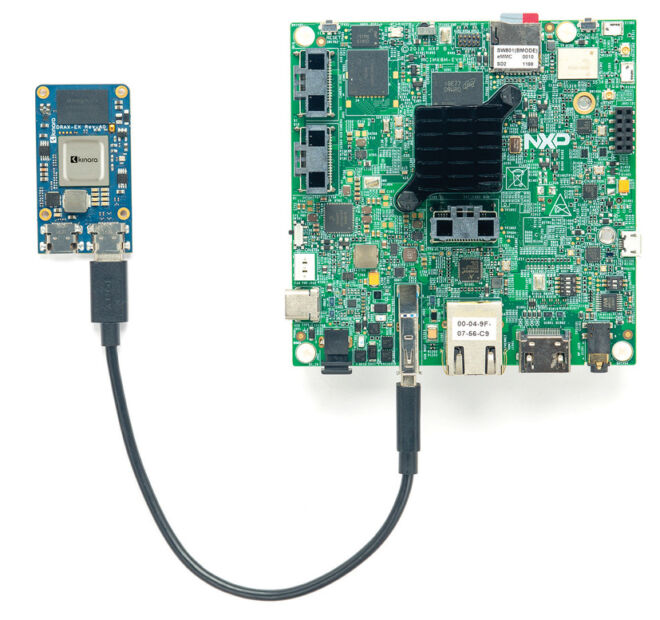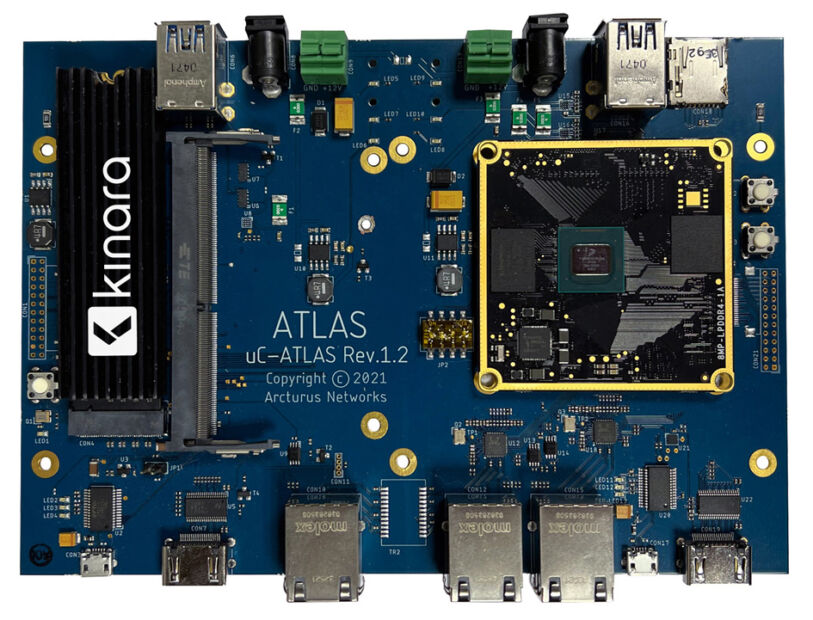Kinara and NXP optimise learning at edge
- September 14, 2022
- Steve Rogerson

California-based Kinara, a developer of AI processors for edge computing, is collaborating with Dutch electronics firm NXP to optimise deep learning at the edge.
Through this collaboration, customers of NXP’s AI-enabled product portfolio will have the option to scale their AI acceleration needs by using the Kinara Ara-1 edge AI processor for high performance inferencing with deep-learning models.
Working together, the two companies have integrated the computer vision capabilities of the NXP i.MX applications processors with the performance- and power-optimised inferencing of the Ara-1 AI processor to deliver computer vision analytics for a range of applications that include smart retail, smart city and industrial.
The patented Ara-1 edge AI processor combines performance, power and price for integrated cameras and edge servers. Kinara AI complements its processing technology with development tools that allow its customers to convert their neural network models into optimised computation flows ready to be deployed on the Ara-1 chip.
“Intelligent vision processing is an exploding market that is a natural fit for machine learning,” said Kevin Krewell, principal analyst at Tirias Research. “But vision systems are getting increasingly complex, with more and larger sensors, and model sizes are growing. To keep pace with these trends requires dedicated AI accelerators that can handle the processing load efficiently, both in power and silicon area. The best modular approach to vision systems is a combination of an established embedded processor and a power-efficient AI accelerator, like the combination of NXP’s i.MX family of embedded applications processors and the Kinara AI accelerator.”
NXP’s AI processing products encompass its microcontrollers (MCUs), i.MX RT series of crossover MCUs and i.MX applications processor families, which represent various multicore options for multimedia and display applications. NXP’s portfolio covers a large portion of AI processing needs natively and, for any use case that requires even higher performance AI due to increases in frame rates, image resolution and number of sensors, the demand can be accommodated by integrating NXP processors with Kinara’s Ara-1 to deliver a scalable, system-level option where customers can scale up and partition the AI workload between the NXP device and the Ara-1, while maintaining common application software running on the NXP processors.
“Our processing and AI software stacks enable a very wide range of AI performance requirements,” said Joe Yu, vice president at NXP. “This is a necessity given our extremely broad customer base. By working with Kinara to help satisfy our customer’s requirements at the highest end of edge AI processing, we will bring high performance AI to smart retail, smart city and industrial markets.”
Ravi Annavajjhala, CEO of Kinara, added: “We see two general trends with our edge AI customers. One trend is a shift towards a Kinara solution that significantly reduces the cost and energy of their current platforms that use a traditional GPU for AI acceleration. The other trend calls for replacing edge AI accelerators from well-known brands with Kinara’s Ara-1 allowing the customer to achieve at least a four-times performance improvement at the same or better price. Our collaboration with NXP will allow us to offer very compelling system-level solutions that include commercial-grade Linux and driver support that complements the end-to-end inference pipeline.”

• Kinara is working with Arcturus Networks, a provider of edge AI analytics and enablement for smart city applications, to help users deliver high-performance, cost-optimised AI.
The partnership combines the Ara-1 processor with Arcturus Brinq edge AI and vision analytics software to drive detection, tracking and characterisation. The partnership delivers critical software and hardware platforms required by OEMs to build real-time edge applications for public safety, transportation, healthcare, retail and industrial markets.
For example, Kinara and Arcturus can deliver a real-time option for road condition monitoring, allowing public transportation buses retrofitted with smart cameras to detect road obstructions such as potholes and report them directly to city operations.
Brinq is an edge AI software suite that combines vision algorithms, inference, analytics applications and tools to help users fine-tune machine-learning models. The software includes multiple object tracking technology.
Supported hardware includes the Arcturus Atlas scalable edge inference platform using NXP’s i.MX 8M Plus SoC and accelerated using the Ara-1. The combination of Brinq software, Atlas hardware and Ara-1 delivers a turnkey AI platform that de-risks development, reduces time-to-market and lowers total cost of ownership for OEMs.
“Our Brinq software provides a flexible edge AI pipeline architecture that makes it easy to integrate a variety of compute units such as CPUs, GPUs or NPUs,” said David Steele, director of innovation at Arcturus Networks. “By using Kinara’s Ara-1 processor, we can deliver more sophisticated smart city analytics that achieve higher throughput and improved accuracy. This allows us to enable a new generation of edge AI applications while achieving excellent price-performance value for our customers.”




